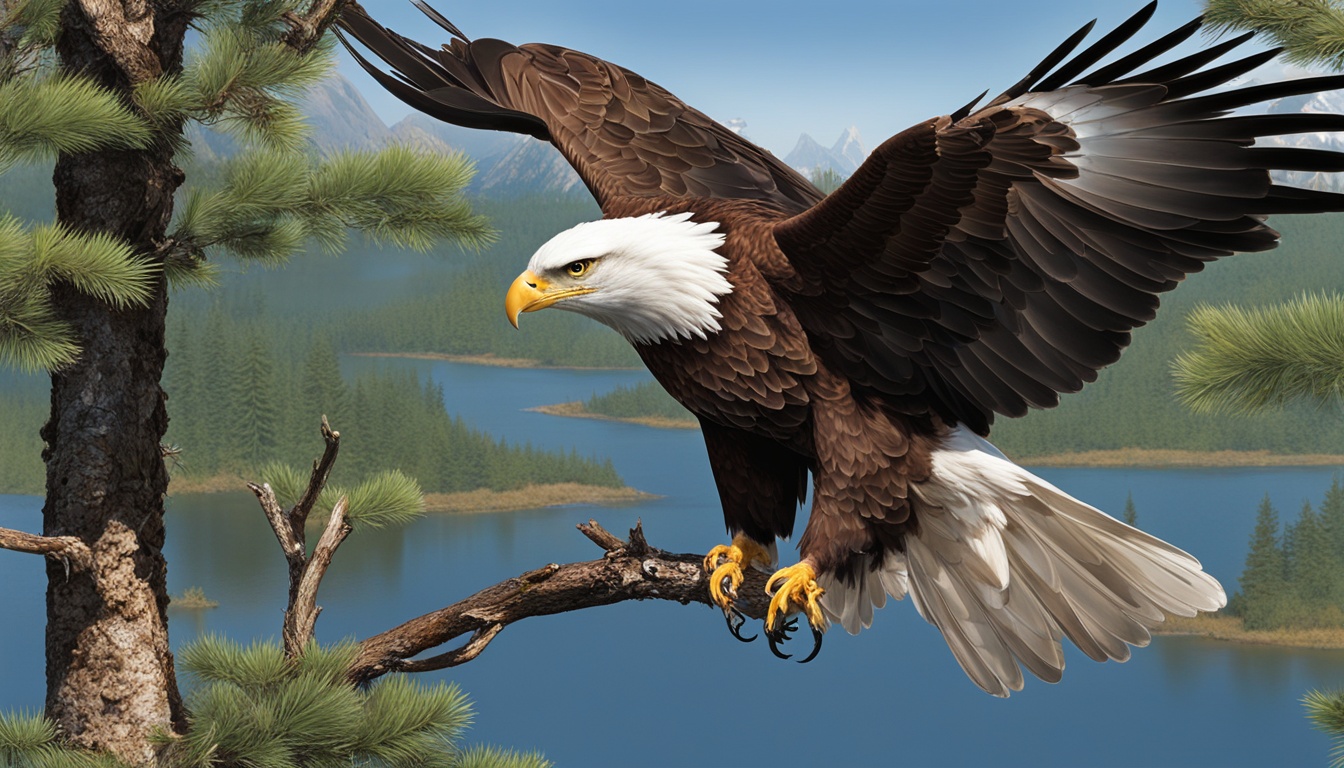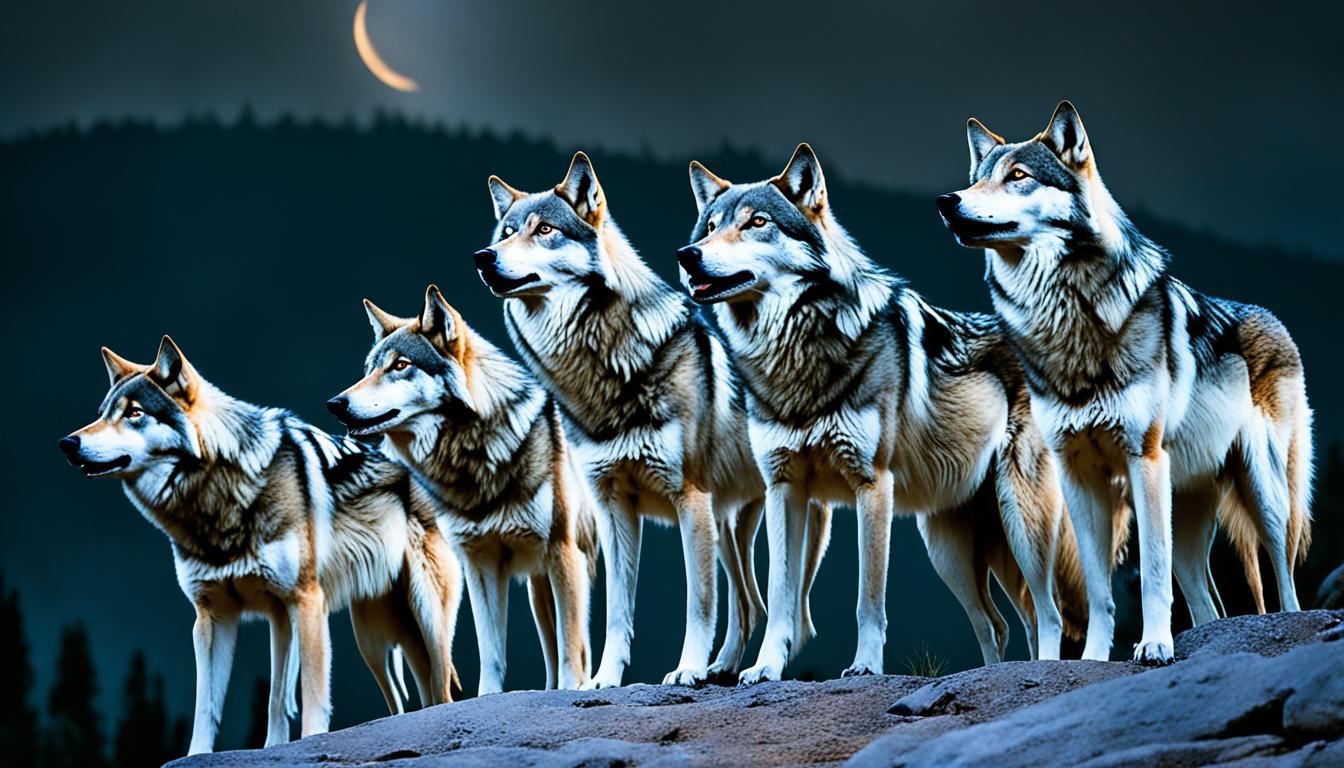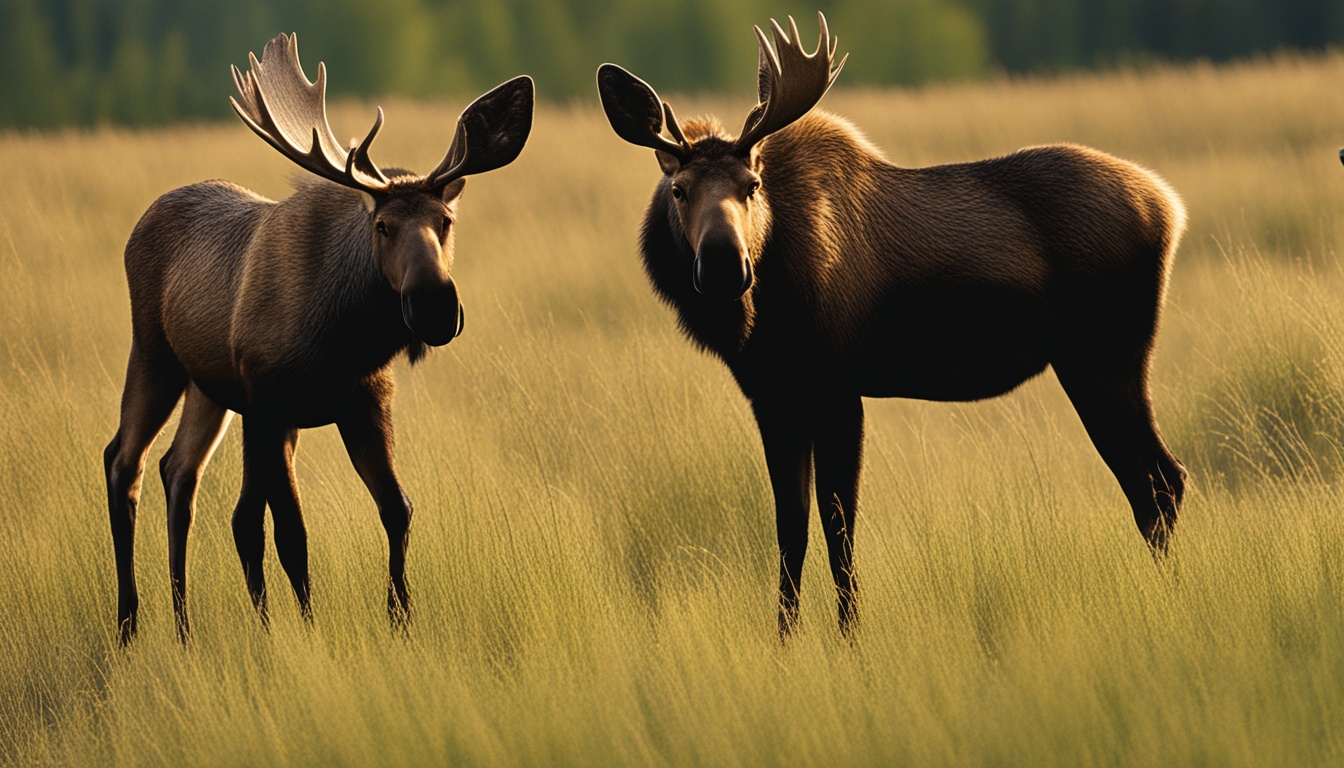Have you ever wondered what makes the Bald Eagle and the Golden Eagle different? Both are American eagles but figuring out which is which can be tough.
In the U.S., you can see the Bald Eagle and the Golden Eagle. They fly across the country, from the northern states to Mexico, especially during winter. Sometimes, you might spot the Steller’s Sea-Eagle or the White-tailed Eagle in places like Alaska. These rare visitors come from Asia and Eurasia.
If you want to identify eagles in the USA, there are great resources available. The American Birding Association, American Ornithology Society, and the American Bird Conservancy provide bird lists, maps, and tools. These are your go-to for eagle watching.
Introduction to Eagles in North America
Eagles are the biggest birds of prey in the Accipitridae family of North America. The Bald Eagle and the Golden Eagle are special. They live in many parts of the continent.
Although they were once near extinction, eagles are now more common. This is thanks to hard work in bird conservation. Places like birding institutions give us the tools to know eagles better.
If you love birds or are just starting to watch, these tools are great. They teach us about each eagle type. This makes learning about eagles fun and not hard.
The Bald Eagle: America’s Iconic Bird
The Bald Eagle is a top symbol of the United States. It’s key to know about their looks and how they act for proper Eagle identification. We will cover their physical features, how their feathers change, and where they live and what they do.
Physical Characteristics
Adult Bald Eagles have dark brown bodies and bright white heads and tails. They also have yellow beaks, eyes, and legs. These yellow features help you tell Bald Eagles apart from other eagles.
Plumage Stages
Bald Eagles change their feathers as they grow older. Youngsters start with all dark brown feathers. As time passes, they get mixed patterns. Finally, they get the famous black and white look of adult Bald Eagles.
Habitat and Behavior
Bald Eagles love places near water like lakes and rivers. These areas are full of fish, the main part of their diet. Watching how they fly and build nests offers a deeper look at these impressive birds.
The Golden Eagle: A Majestic Predator
The Golden Eagle is recognized as a powerful bird of prey in America. It is known for its large size and unique hunting skills. Let’s explore its key features, diet, hunting methods, and where it lives.
Distinct Features
The Golden Eagle is large with a strong build. It looks mostly chocolate-brown but has a special golden neck. Its long tail and its wings that tip upwards are easy to notice when it flies.
Diet and Hunting Techniques
Golden Eagles hunt mammals like rabbits and other birds. They’re skilled hunters with sharp talons and beaks. Their great eyesight helps them spot prey from far away, then they dive to catch it.
Range and Habitat
Golden Eagles mainly live in the western U.S. They can also be found in parts of Canada, Alaska, and Mexico. They like open, mountainous areas for hunting and nesting. Seeing them in different places shows why knowing about eagle species and their homes is important.
| Characteristics | Golden Eagle Features |
|---|---|
| Size | Large, robust build |
| Plumage | Chocolate-brown with a lighter golden nape |
| Tail | Elongated, noticeable in flight |
| Wing Profile | Slight dihedral |
How do you identify different types of eagles in the USA?
Spotting different eagle species in the USA needs careful attention.
To spot eagles in the USA well, look for key marks. These are size, plumage coloration, and patterns that change with age. Also, pay attention to wing shape, how they fly, and tail length. These help tell eagles apart in America.
Comparing eagle details is helpful. They can have different behaviors or like different homes. This makes telling them apart easier.
| Feature | Bald Eagle | Golden Eagle |
|---|---|---|
| Size | 34-43 inches | 30-40 inches |
| Plumage (Adult) | White head and tail, dark brown body | Uniform dark brown with a golden nape |
| Wing Shape | Flat, broad wings | Slightly dihedral wings |
| Tail Length | Medium, fan-shaped | Long, rounded |
Make sure to note these special features. It helps you tell the eagles in America apart. This makes spotting birds more fun.
Steller’s Sea-Eagle: An Asian Visitor
The Steller’s Sea-Eagle is a stunning bird mainly found in Asia. It flies to western Alaska, impressing us with its beauty.
This remarkable eagle has a strong body and remarkable colors. It has dark brown feathers on its body, which look amazing next to its white wings and tail.
| Feature | Description |
|---|---|
| Primary Region | Asia |
| North American Visit | Western Alaska |
| Coloration | Dark brown body, white wings and tail |
| Build | Powerful, robust |
When it visits Alaska, the American continent becomes richer in eagle species. For those who love watching birds, seeing this eagle is very special. It reminds us why we must protect their homes and conserve nature.
The White-tailed Eagle: Known as the “Gray Sea-Eagle”
The White-tailed Eagle, sometimes called the “Gray Sea-Eagle,” is rare in North America. It’s especially uncommon in Alaska. This large bird comes from Eurasia. Spotters get excited when they see it because of its unique look and size.
This eagle stands out with its white tail and big body. It looks powerful and has special feathers. It’s a thrilling sight for anyone following an eagle spotting guide.
People who watch birds can learn to spot this eagle. They look for certain signs and actions. Many guides help bird lovers see and recognize this special eagle in North America.
Identifying Eagles by Plumage and Age
When you try to spot eagles, knowing about their feathers and how they change with age is key. This helps tell the difference between Bald Eagles and Golden Eagles. I’ll break down how their looks change over time and as they grow up.
Bald Eagle Plumage Stages
Spotting a Bald Eagle means looking at how its feathers change from young to adult. Young Bald Eagles have dark brown feathers that later mix with white. As they get older, bright white heads and tails contrast against the dark brown of their bodies.
Golden Eagle Age Variations
Golden Eagles also have different looks as they age, making them easier to tell apart. While they are young, Golden Eagles look patchy with touches of white. But, their feathers turn a golden brown as they get older, with a shiny spot at the back of their neck.
| Identification Trait | Bald Eagles | Golden Eagles |
|---|---|---|
| Juvenile Plumage | Uniform dark brown | Patchy with white bases on tail and wings |
| Intermediate Plumage | Mottled appearance with gradual color changes | Increasing consistency in brown feathers |
| Adult Plumage | Dark brown body with distinct white head and tail | Uniform chocolate-brown with golden nape |
Key Differences Between Bald Eagles and Golden Eagles
Understanding the differences between Bald Eagles and Golden Eagles is key in North America. These majestic birds have similar traits but also key distinctions. Knowing these can greatly help in telling them apart across the country.
Wing Shape and Flight Profile
Bald Eagles have flat and broad wings. They show little curve when they fly. Golden Eagles, on the other hand, have wings that form a slight V shape. This V-shape is a clear sign it’s a Golden Eagle and not a Bald Eagle.
Tail Length and Shape
Tails are also important when identifying eagles. Bald Eagles have short, straight tails. This matches their broad wings. Golden Eagles have longer tails that help with their flying skills. It’s another clue you’re looking at a Golden Eagle.
Looking at wings and tails can help you spot the difference. Understanding these features is crucial for eagle spotting. It makes your birdwatching better and you learn more about these amazing eagles in North America.











